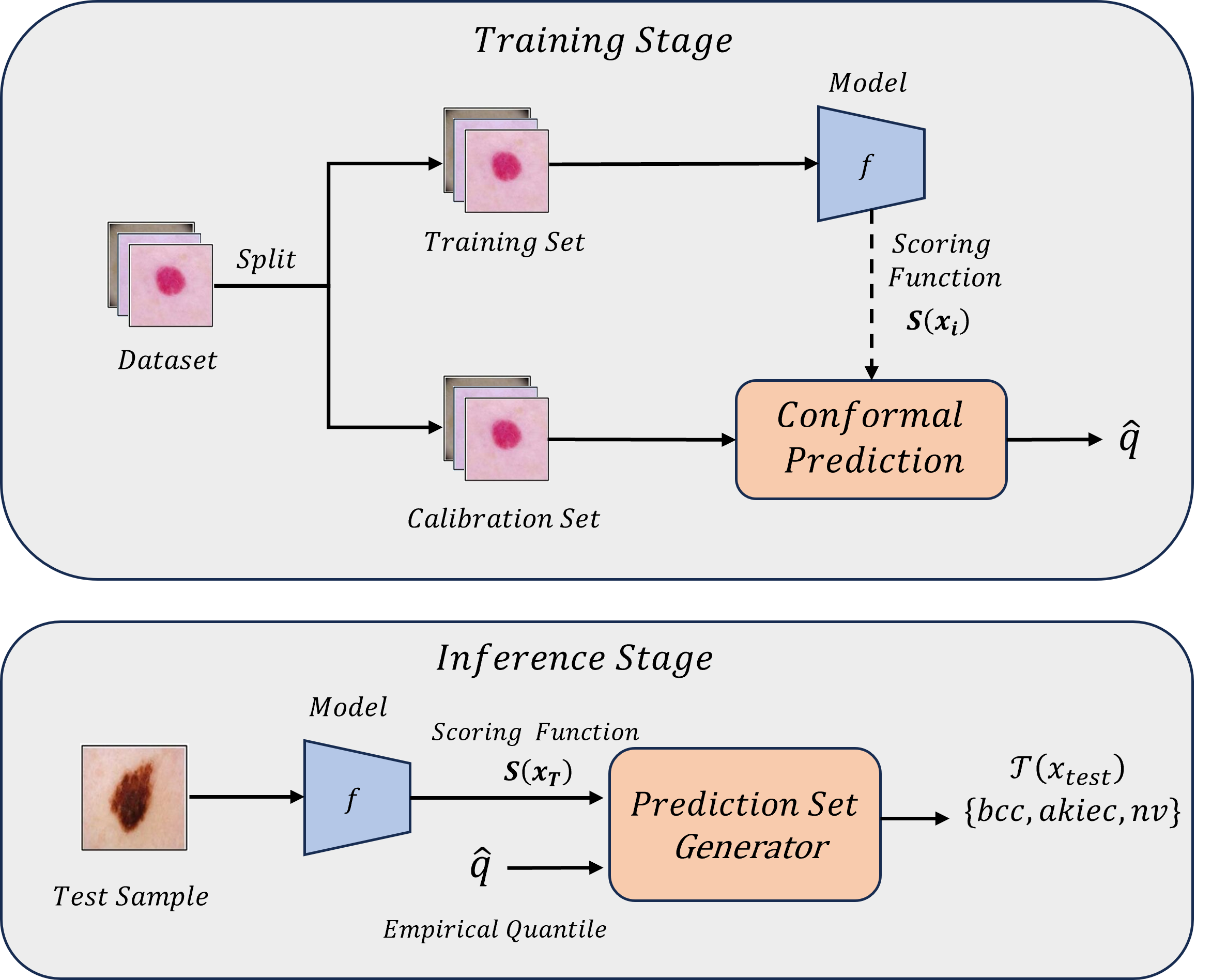
Abstract
Background and objective:
Uncertainty quantification is a pivotal field that contributes to realizing reliable and
robust systems. It becomes instrumental in fortifying safe decisions by providing
complementary information, particularly within high-risk applications. existing studies
have explored various methods that often operate under specific assumptions or necessitate
substantial modifications to the network architecture to effectively account for
uncertainties. The objective of this paper is to study Conformal Prediction, an
emerging distribution-free uncertainty quantification technique, and provide a
comprehensive understanding of the advantages and limitations inherent in various methods
within the medical imaging field.
Methods:
In this study, we developed Conformal Prediction, Monte Carlo Dropout, and Evidential Deep
Learning approaches to assess uncertainty quantification in deep neural networks. The
effectiveness of these methods is evaluated using three public medical imaging datasets
focused on detecting pigmented skin lesions and blood cell types.
Results:
The experimental results demonstrate a significant enhancement in uncertainty
quantification with the utilization of the Conformal Prediction method, surpassing the
performance of the other two methods. Furthermore, the results present insights into the
effectiveness of each uncertainty method in handling Out-of-Distribution samples from
domain-shifted datasets. Our code is available at: github.com/jfayyad/ConformalDx.
Conclusions:
Our conclusion highlights a robust and consistent performance of conformal prediction
across diverse testing conditions. This positions it as the preferred choice for decision-
making in safety-critical applications.